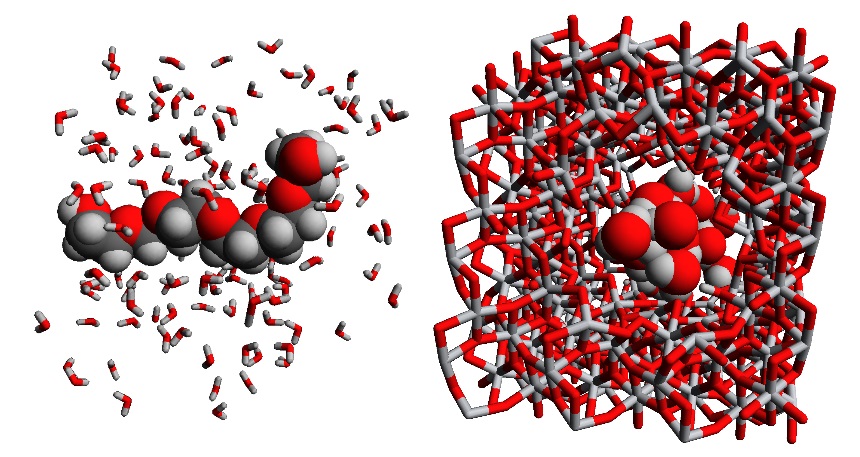Kinetic results, rate laws and reaction mechanisms were established for the base hydrolysis of 6-nitrocoumarin (NC), 6-nitrocoumarin-3-carboxylic acid (NCC), in aqueous solution, water-methanol and water-acetone mixtures. The kinetics of the base hydrolysis followed a rate law with kobs= k2[OH-] for all coumarin derivatives under study except 6-nitrocoumarin-3-carboxylic acid (NCC) which followed a rate law with kobs= k1+ k2[OH-]. The kinetic data leaded to Gibbs free energies of activation (the change in activation barrierδ m∆G#).
The solubilities of the non-charged compounds, , NC, water-methanol and water-acetone mixtures were established and their transfer chemical potentials were calculated. Moreover, the solubilities of calcium and lanthanum salts of NCC in water-methanol mixtures were established and the transfer chemical potentials of their anions were calculated. Furthermore, the solubilities of cerium and lanthanum salts of NCC in water-acetone mixtures were established and the transfer chemical potentials of their anions were calculated. Solvent effect on reactivity trends of the investigated coumarin derivatives have been analyzed into initial and transition state components by using the transfer chemical potentials of the reactants and the kinetic data of the studied compounds. The activation parameters of the base hydrolysis reaction are evaluated and discussed by carrying out the base hydrolysis of the studied coumarin derivatives in water-methanol and water-acetone mixtures at different temperatures. The high negative values of entropy of activation (∆S#) support the proposal mechanism, i.e. the investigated reaction takes place via the formation of an intermediate complex. Moreover, these values refer to the rigidity and stability of the intermediate complex .Thus, the ring opening of the intermediate complex would be the rate controlling step. Also the relatively high free energy of transfer (∆G#) indicate that the slow step is the ring opening of the established intermediate complex and many vibrational degrees of freedom have been transformed into translations. The straight lines obtained from the isokinetic plots (∆S≠ versus ∆H≠) of the studied base hydrolysis reaction in water-methanol and water-acetone mixtures provide that the base hydrolysis of the studied coumarin derivatives followed one mechanism, i.e. the same rate determing step (RDS).


